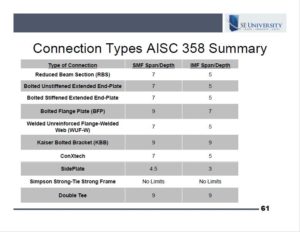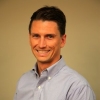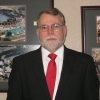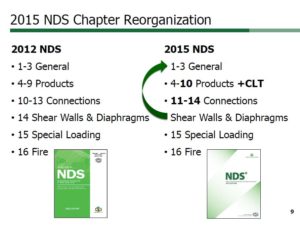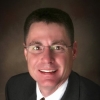24 Aug 2017
Tips for Improving your Email Communication
Have you given much thought as to how your clients and co-workers might describe communicating with you? Are you aware that each email you send makes a statement about your reputation as an engineer? Email has become the most used form of communication, and whether you are managing a project through email, or building new business relationships, every email is a reflection of your personal brand.
In August 2017, Ash Norton, from Ash Norton Leadership, presented Digital Presence for Engineers: What are Your Emails Really Saying? for SE University. Ash spoke about how our emails contribute to our personal brand or reputation whether we intend them to or not. Also, Ash spoke about how emails can be misinterpreted without tone and body language to help define their intent, so we must be very intentional in our choice of words.
Ash gave some great pointers to improve our daily communication via email:
| Do: | Don’t: |
| Match formality to relationship and desired digital presence | Use negative words |
| Use one topic subject lines | Use text speak |
| Minimize interpretation opportunities | Overuse punctuation |
| Include a clear call to action | Use all caps |
| Proofread | Use email to convey emotion |
| Recognize that it is a record | Use email to manage conflict |
| Attempt sarcasm or humor |
Overall, taking the time to consider how our emails reflect our reputation within the engineering community is a worthwhile endeavor and can lead to better receptivity of your message. Before you hit send, reconsider how the email might be perceived and strive to enhance your reputation and professionalism.
Special moment frame design can be daunting for the engineer that is not completely familiar with the many code provisions that ensure they can withstand high seismic activity. Even the most seasoned seismic designers can benefit by reviewing the additional design and detailing requirements occasionally to be sure nothing is missed when designing these highly complex frame systems and connections.
In June 2017, Matt Mester, PE, SE from SidePlate Systems, Inc. presented Moment Frames: Design and Detailing per AISC 341 and 358 for SE University. His presentation included moment frame and connection design principles, and he compared and contrasted the various code requirements for each type of moment frame. Matt also reviewed the use of prequalified moment connections from AISC 358.
During his presentation, Matt referenced the NEHRP Seismic Design Technical Brief No. 2. This brief specifically addresses the design and detailing of special moment frames and their connections to ensure they can safely withstand severe earthquake shaking while experiencing substantial inelastic deformation. Included in the brief are analysis and design guidance, additional requirements, and detailing and constructability issues. This more in depth discussion on special moment frames is a great reference for engineers that typically practice in high seismic zones and for engineers that may just be getting started in the design of special moment frames.
In July 2017, Kimberley Robinson, PE, SE, from SunSteel, LLC, gave a talk on Buckling Restrained Braced Frames. She chose the Structural Engineers Association of Utah Scholarship Program (http://www.seau.org/) for the SEU Speaker Inspires donation of the month.
Kim designated the same organization after her December 2016 SE University session, and she shared then why she chose the SEAU Scholarship Program: “I think that it is very important to support young and talented would-be engineers and bring them closer to their goal of a college degree and a rich and rewarding career.”
Thank you, Kim, for helping structural engineers with your SE University session, and for your designation of the SEAU Scholarship Program as our SEU Speaker Inspires Organization of the Month!
19 Jul 2017
AISC 358 Connection Types and Limits
Connection design can get complicated when a building is located in a high seismic region. These connections require a significant amount of inelastic deformation in order to safely resist strong seismic activity. After the Northridge earthquake in 1994, many connection failures found in the aftermath allowed code officials to investigate and make changes to prevent these types of failures from recurring. One of the many results from this incident was the eventual development of the prequalified moment connections contained in AISC 358.
In June 2017, Matt Mester, PE, SE from SidePlate Systems, Inc. presented Moment Frames: Design and Detailing per AISC 341 and 358 for SE University. Matt reviewed all of the prequalified moment connections contained in AISC 358 and discussed the restrictions and limitations for when these connections can be used. He presented several useful charts which show each connection type included in AISC 358. Click on the slide below to access the 4 page file so that you can create your own quick reference chart for future seismic connection design.
In June 2017, Matthew Mester, PE, SE, from SidePlate Systems, Inc., presented Moment Frames: Design and Detailing per AISC 341 and 358. He nominated the Structural Engineers Association of Southern California Foundation (http://www.seaosc.org) for the SEU Speaker Inspires donation of the month.
The Structural Engineers Association of Southern California Foundation, in its goals to further the development of the structural engineering profession, looks for partners, be it individuals, companies or corporations, to pursue structural engineering innovation and research for use in the public domain. The foundation can assist in the development process of specific structural engineering research projects and publishing of any findings.
The foundation is dependent upon donations for its operation and funding of research projects and annual student scholarships. Matthew chose to donate to the SEAOSC Foundation for student scholarships to “help the next generation of structural engineers.”
Thank you, Matthew, for helping structural engineers with your SE University session, and for your designation of the Structural Engineers Association of Southern California Foundation as our SEU Speaker Inspires Organization of the Month!
SE University began the SEU Speaker Inspires program in 2015 as a way to “pay it forward”, enabling our speakers to designate a charity/organization of their choice for SE University to make a donation to help improve our world.
23 Jun 2017
Overcoming Mistakes at Work
I think we can all agree, everyone makes mistakes. But how we deal with mistakes can greatly influence our success at work and in life. As Mark Twain once said, “Good judgement is the result of experience and experience the result of bad judgement.” So, how then are we to handle our mistakes in a way that nurtures self-growth, rather than self-doubt?
Here are three steps toward moving past mistakes in the workplace:
- Be honest with yourself and your supervisor. Admit your mistake and take responsibility. Although we all hate to admit we were wrong, making excuses or blaming others impedes our ability to learn from the mistake.
- Make amends. Do your best to help fix the problem; taking the initiative of responsibility will help to show your willingness to completing a successful project.
- Move on. Dwelling on past mistakes will lead to a fear to act on new opportunities.
Though it may be a rough season to walk through, learning from mistakes can lead to growth and better decision making in the future. I once worked with a senior engineer who had missed checking some roof trusses for uplift, and only realized their mistake as the building was being constructed. Rather than cover their tracks, the engineer graciously shared their misdeed with the younger engineers so that we might learn from their mistake, and avoid one of our own. Honesty and humility can go a long way toward repairing any mistake you might have committed, and may gain you some respect from your colleagues.
In April 2017, Patrick Fortney, PhD, PE, SE, P.Eng, from the University of Cinncinati, presented The Chevron Effect – A Paradigm Shift in Approach to Analysis. He nominated Wounded Warrior Project (https://www.woundedwarriorproject.org/) for the SEU Speaker Inspires donation of the month.
Patrick shared why he chose the WWP: “The mission of the Wounded Warrior Project is to honor and empower wounded warriors who incurred a physical or mental injury, illnesses, or wound, co-incident to military service on or after September 11, 2001. As with most veterans, these veterans served our country not out of any political bent or personal goal; they made selfless commitments to protect and preserve the great freedoms that we as Americans enjoy and vowed to resist anyone acting to take our freedoms from us.
The Wounded Warrior Project not only addresses the physical ailments of these veterans but, takes a holistic approach to helping veterans to once again acclimatize to their private and personal lives; addressing issues not only suffered by the veterans but, by their families as well. I encourage everyone to view the testimonials of the wounded veterans and their families to which this charity has served. We cannot overlook or underestimate the sacrifices made by our veterans.”
Thank you, Patrick, for helping structural engineers with your SE University session, and for your designation of Wounded Warrior Project as our SEU Speaker Inspires Organization of the Month!
SE University began the SEU Speaker Inspires program in 2015 as a way to “pay it forward”, enabling our speakers to designate a charity/organization of their choice for SE University to make a donation to help improve our world.
Have you seen some of the new mid to high-rise structures that are using cross-laminated timber? While the product has been used in Europe since the 1990s, it has more recently become available in the US and Canada. Now, with the incorporation of this new wood product in the 2015 NDS for Wood Construction, you can expect its availability to increase as more designers become aware of its structural properties.
In the April 2017 SE University Core Session, Lori Koch, PE from the American Wood Council addressed changes in the 2015 NDS for Wood Construction. While some are minor revisions, the most significant change to the 2015 NDS is the incorporation of Cross-laminated Timber (CLT). Lori acknowledged this new wood product has been used internationally for some time, and the NDS felt it was important to include a new chapter for CLT in the wood products section of the code. Chapter 14, which referenced design of shear walls and diaphragms from the 2012 NDS, was relocated and included in Chapter 1, so with the addition of Chapter 10 for CLT, the 2015 NDS still remains at 16 chapters.
Also, new to the NDS is terminology for Laminated Strand Lumber (LSL) and Oriented Strand Lumber (OSL). Chapter 8 on Structural Composite Lumber reflects the inclusion of these products in ASTM D5456. Chapter 16, Fire Design of Wood Members, was revised to include CLT.
Additionally, there were updates to design values for southern pine within the NDS Supplement. For a complete listing of changes to the 2015 NDS including references to CLT, read this article from STRUCTURE Magazine or visit www.awc.org for complete information about the 2015 NDS.
In March 2017, Pat Conway, AIA, from the International Masonry Institute, presented Masonry Movement Joints from a Structural and Architectural Perspective. He nominated Friends of Blue Mound State Park (http://fwspbluemound.blogspot.com/) for the SEU Speaker Inspires donation of the month.
Friends of Blue Mound State Park is a group of volunteers working together to benefit the park by enhancing and preserving its natural resources while offering activities and projects to improve the park guest’s visit. Pat shared that he chose Friends of Blue Mound State Park because they “help support our K-5th grade Youth Cross-Country Ski Program to introduce children and families to a winter sport as a part of a fun, active, outdoor Nordic lifestyle. This ski program is run by the Blue Mound Nordic Ski Club and offers ski lessons and games on Saturday mornings in January and February. We rent ski equipment to families and offer scholarships to those who cannot afford it.”
Thank you, Pat, for helping structural engineers with your SE University session, and for your designation of Friends of Blue Mound State Park as our SEU Speaker Inspires Organization of the Month!
SE University began the SEU Speaker Inspires program in 2015 as a way to “pay it forward”, enabling our speakers to designate a charity/organization of their choice for SE University to make a donation to help improve our world.
24 Apr 2017
Safety on the Jobsite
What can you do to be a part of the solution to jobsite safety next time you are out for inspections or construction meetings? Here are several tips to keep safe and be a part of the team creating a safe workplace on the construction site:
- Communicate. Let those in charge be aware of your presence and ask about any potential hazards that may be present during your visit.
- Be prepared. Bring and wear appropriate safety equipment to prevent injury due to accidents.
- Watch for instability. Be vigilant to notice unstable materials and maintain a safe distance from walls or panels that are braced but not yet connected to the structure. Mind all marked boundaries.
- Climb with care. Be sure to ask for assistance in using ladders, scaffolding, or lifts when visiting a jobsite.
Construction sites are constantly changing, and safety is everyone’s responsibility! Read more in Working Well with Others, from the December 2014 edition of Modern Steel Construction, to learn about being a part of the solution.


